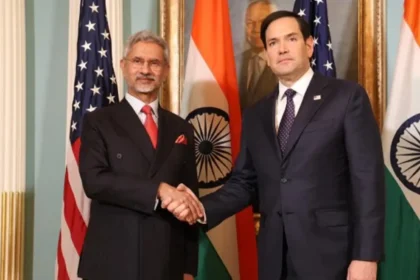Inside Trump’s Decision: 5 Shocking Shifts and Strategic Misdirections Before the Iran Strike
Discover the 5 key shifts and political misdirections that led to Trump’s decision to strike Iran. Uncover the behind-the-scenes strategy, surprise moves, and what it means for U.S. foreign policy
Standing at the lectern in the White House briefing room on Thursday afternoon, Karoline Leavitt, the White House press secretary, read a message she said came “directly from the president.”
Because of the “substantial chance of negotiations” with Iran that could bring the United States back from the brink of jumping into the war in the Middle East, President Trump’s statement said, he would make a decision about whether or not to strike Iran “within the next two weeks.”

Mr. Trump had been under pressure from the noninterventionist wing of his party to stay out of the conflict, and was having lunch that day with one of the most outspoken opponents of a bombing campaign, Stephen K. Bannon, fueling speculation that he might hold off.
It was almost entirely a deception. Mr. Trump had all but made up his mind to bomb Iran’s nuclear facilities, and the military preparations were well underway for the complex attack. Less than 30 hours after Ms. Leavitt relayed his statement, he would give the order for an assault that put the United States in the middle of the latest conflict to break out in one of the world’s most volatile regions.
Mr. Trump’s “two weeks” statement was just one aspect of a broader effort at political and military misdirection that took place over eight chaotic days, from the first Israeli strikes against Iran to the moment when a fleet of B-2 stealth bombers took off from Missouri for the first American military strikes inside Iran since that country’s theocratic revolution in 1979.
Interviews with administration officials, Trump allies and advisers, Pentagon officials and others familiar with the events show how, during this period, different factions of Mr. Trump’s allies jockeyed to win over a president who was listing in all directions over whether to choose war, diplomacy or some combination.
Outsiders tried to divine which faction was ascendant based on whom Mr. Trump met with at any given time. Mr. Trump seemed almost gleeful in telling reporters that he could make a decision “one second before it’s due, because things change, especially with war.”
All the while, Mr. Trump was making blustery statements indicating he was about to take the country into the conflict. “Everyone should evacuate Tehran!” he wrote on Monday last week on Truth Social, the social media platform he owns. The following day, he posted that he had not left a meeting of the Group of 7 in Canada to broker a Middle East cease-fire but for something “much bigger.”

So, he told the world, “Stay tuned!”
These public pronouncements generated angst at the Pentagon and U.S. Central Command, where military planners began to worry that Mr. Trump was giving Iran too much warning about an impending strike.
They built their own deception into the attack plan: a second group of B-2 bombers that would leave Missouri and head west over the Pacific Ocean in a way that flight trackers would be able to monitor on Saturday. That left a misimpression, for many observers and presumably Iran, about the timing and path of the attack, which would come from another direction entirely.
The strike plan was largely in place when Mr. Trump issued his Thursday statement about how he might take up to two weeks to decide to go to war with Iran. Refueling tankers and fighter jets had been moved into position, and the military was working on providing additional protection for American forces stationed in the region.
While the “two weeks” statement bought the president more time for last-minute diplomacy, military officials said that ruse and the head fake with the B-2s also had the effect of cleaning up a mess — the telegraphing of the attack — that was partly of the president’s making.
Asked to comment on the details of this article, Ms. Leavitt said the president and his team “successfully accomplished one of the most complex and historic military operations of all time” regarding Iran’s nuclear sites. She added that “many presidents have talked about this, but only President Trump had the guts to do it.”








